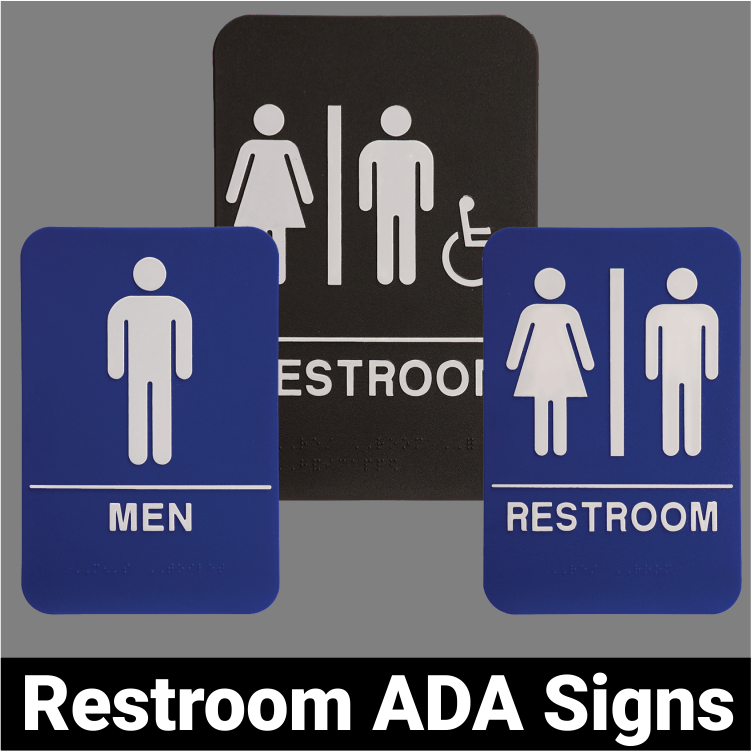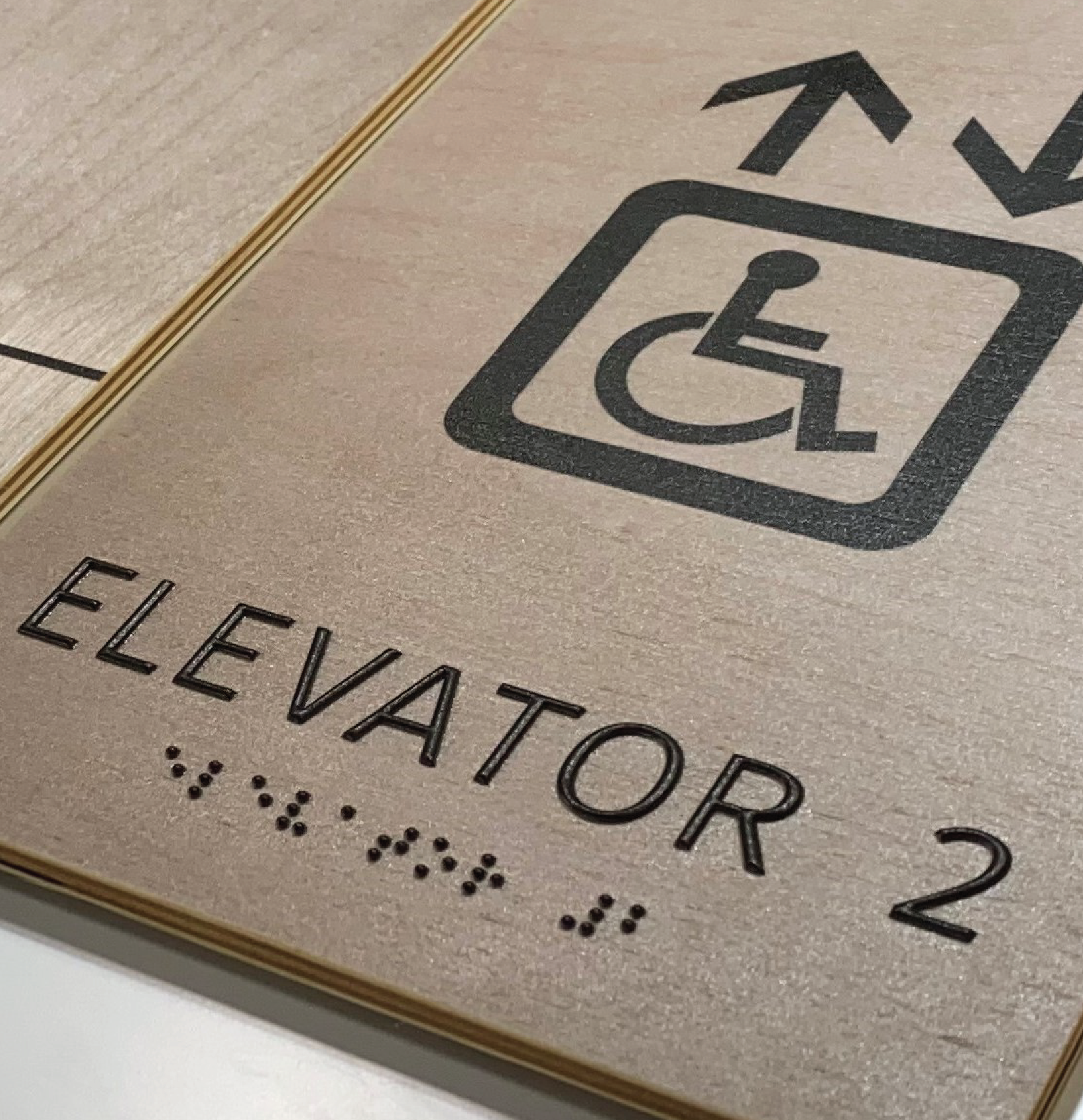Checking Out Innovative Styles for Efficient ADA Signs
Exploring the Key Attributes of ADA Signs for Boosted Ease Of Access
In the realm of access, ADA indicators offer as quiet yet effective allies, ensuring that spaces are inclusive and navigable for individuals with specials needs. By integrating Braille and tactile components, these indications damage barriers for the aesthetically damaged, while high-contrast shade schemes and readable fonts provide to diverse visual requirements.
Significance of ADA Conformity
Making certain conformity with the Americans with Disabilities Act (ADA) is vital for promoting inclusivity and equivalent accessibility in public spaces and work environments. The ADA, enacted in 1990, mandates that all public facilities, companies, and transport solutions accommodate individuals with handicaps, guaranteeing they take pleasure in the same rights and opportunities as others. Compliance with ADA standards not just satisfies legal responsibilities yet also boosts an organization's reputation by demonstrating its dedication to variety and inclusivity.
One of the key facets of ADA compliance is the application of available signage. ADA indications are designed to make certain that individuals with handicaps can quickly browse through rooms and buildings.
Additionally, adhering to ADA guidelines can reduce the risk of prospective penalties and lawful repercussions. Organizations that fall short to follow ADA standards might encounter fines or suits, which can be both economically difficult and destructive to their public image. Hence, ADA compliance is essential to promoting a fair environment for everybody.
Braille and Tactile Aspects
The incorporation of Braille and responsive aspects right into ADA signage personifies the principles of ease of access and inclusivity. It is normally positioned underneath the corresponding message on signs to make sure that people can access the details without aesthetic aid.
Tactile aspects prolong past Braille and include elevated personalities and symbols. These elements are designed to be noticeable by touch, enabling people to recognize room numbers, restrooms, departures, and various other important locations. The ADA establishes details standards concerning the dimension, spacing, and positioning of these tactile components to maximize readability and make certain consistency throughout various atmospheres.

High-Contrast Color Systems
High-contrast color pattern play a crucial duty in improving the presence and readability of ADA signage for individuals with visual disabilities. These plans are crucial as they make the most of the difference in light reflectance in between message and history, making sure that indicators are quickly discernible, even from a distance. The Americans with Disabilities find out this here Act (ADA) mandates the use of certain shade contrasts to accommodate those with minimal vision, making it a crucial element of compliance.
The efficacy of high-contrast shades hinges on their capability to stick out in various lighting conditions, consisting of poorly lit atmospheres and areas with glow. Generally, dark message on a light background or light text on a dark background is utilized to achieve ideal comparison. Black text on a yellow or white history provides a plain aesthetic distinction that aids in quick acknowledgment and understanding.

Legible Fonts and Text Dimension
When taking into consideration the style of ADA signage, the selection of clear font styles and proper message dimension can not be overstated. The Americans with Disabilities Act (ADA) mandates that fonts need to be sans-serif and not italic, oblique, manuscript, extremely ornamental, or of unusual type.
According to ADA guidelines, the minimum message height need to be 5/8 inch, and it must increase proportionally with seeing range. Consistency in message size adds to a cohesive visual experience, assisting individuals in browsing atmospheres successfully.
Moreover, spacing between lines and letters is integral to readability. Sufficient spacing protects against characters from showing up crowded, ADA Signs enhancing readability. By sticking to these standards, designers can considerably boost access, guaranteeing that signs serves its designated objective for all individuals, no matter their visual abilities.
Effective Positioning Methods
Strategic placement of ADA signage is vital for maximizing ease of access and guaranteeing compliance with lawful criteria. ADA standards state that signs should be mounted at an elevation in between 48 to 60 inches from the ground to guarantee they are within the line of view for both standing and seated individuals.
In addition, indications should be positioned nearby to the lock side of doors to enable easy recognition before access. Consistency in sign positioning throughout a facility boosts predictability, reducing complication and improving general user experience.

Conclusion
ADA signs play a vital role in promoting accessibility by integrating features that attend to the requirements of people with specials needs. These components jointly cultivate a comprehensive environment, underscoring the significance of ADA compliance in guaranteeing equal access for all.
In the realm of accessibility, ADA signs offer as quiet yet powerful allies, guaranteeing that spaces are navigable and comprehensive for individuals with disabilities. The ADA, established in 1990, mandates that all public centers, employers, and transportation solutions fit individuals with impairments, guaranteeing they appreciate the very same legal rights and opportunities as others. ADA Signs. ADA indicators are created to guarantee that individuals with impairments can quickly browse with areas and buildings. ADA guidelines state that signs must be installed at an elevation between 48 to 60 inches from the ground to guarantee they are within the line of sight for both standing and seated individuals.ADA signs play look here an essential function in promoting access by integrating attributes that attend to the requirements of people with impairments